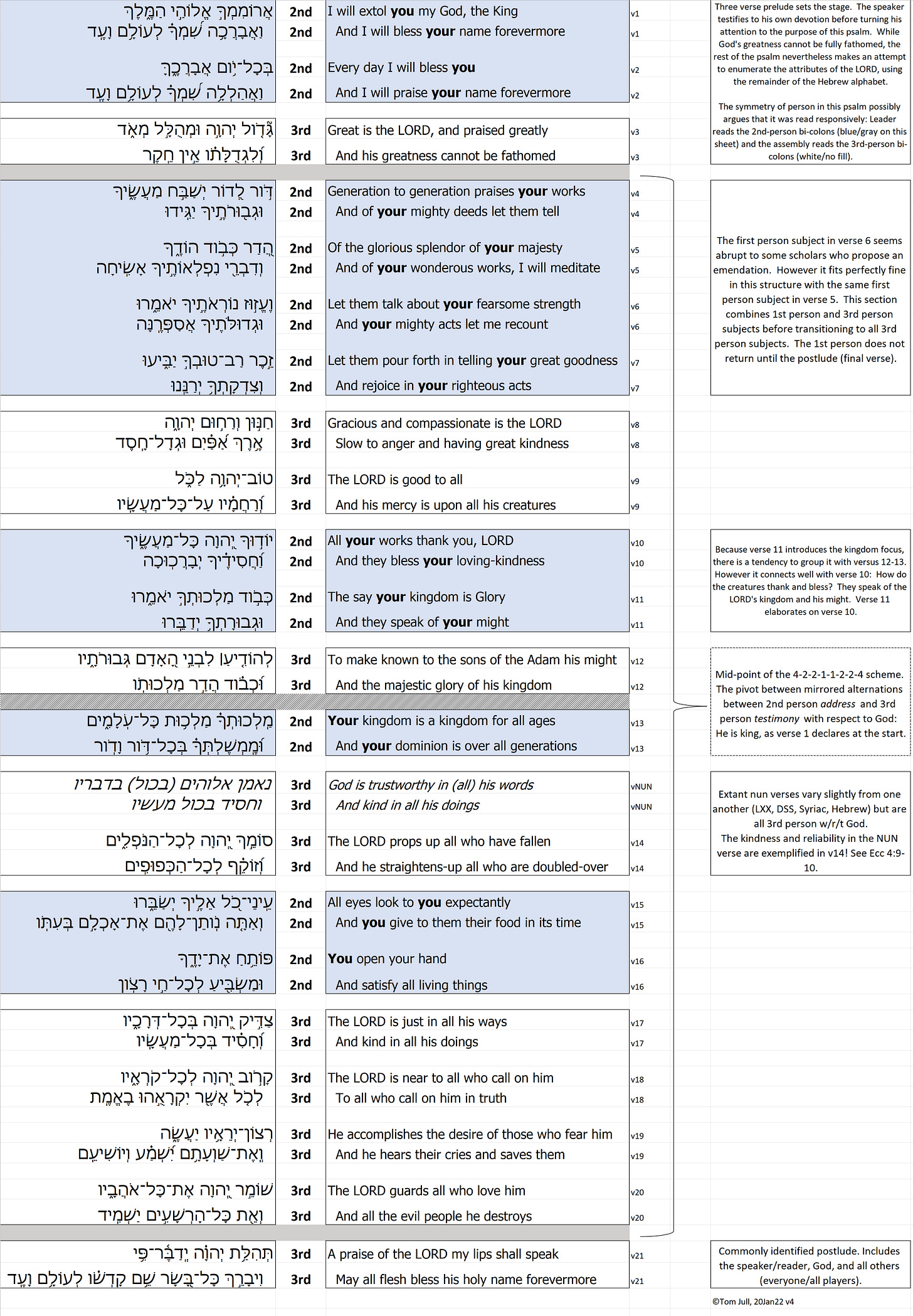Psalm 145 Missing Nun Verse
Proof that the nun verse was there
The background…
Both the Dead Sea Scrolls and the Septuagint versions of Psalm 145 (LXX #144) include a verse that is missing in the Masoretic Text (MT). Much debate back and forth has transpired in support of this additional verse being included as Holy Scripture or excluded. Most printed versions today include it, although with a footnote and without its own verse number. The stalwart King James Version excludes the verse.
I have discovered a structure in the Psalm that (in my mind) all but proves with certainty that the verse was part of the original. I have checked leading sources of academic studies of this psalm, and as far as I know, this structure has not been seen (at least fully).
To refresh your memory, Psalm 145 is an acrostic. Each verse of the Hebrew begins with a subsequent letter of the Hebrew alphabet. Using the ABC’s of Hebrew in this way was a helpful way to memorize the psalm, and several other psalms are acrostic. From aleph to tav, each of the 22 letters of the Hebrew alphabet is represented in order. But in the MT, the 14th letter/verse - the letter nun - is absent. There are fairly good explanations given by defenders of the MT as to why the original author would have skipped this verse. Until the discovery of the Dead Sea Scrolls (DSS), a majority opinion in the West would have sided with the MT over the LXX. But even with the inclusion of the nun verse in the DSS, there are still many who contend it was an awkward addition 2000+ years ago.
My observation should put that contention to rest.
To the point…
Pretty much every scholarly treatment of Psalm 145 attempts to see structure in it, usually thematic. A few writers have noticed how there is a switching back-and-forth in the psalm regarding how the Lord is addressed: 2nd-person (you) versus 3rd-person (he). I noticed this 2nd/3rd switching myself and decided to map it out. Here’s what it looks like in Hebrew and English:
In the middle of this image I have indicated whether the Lord is being referred to in the 2nd or 3rd person. I have included verse numbers to the right of the verses, calling the 14th verse “vNUN”. Bibles that include the verse just tack it on to verse 13. Click on the image to download and enlarge it.
Excluding the easily recognizable prelude and postlude, there is a 4-2-2-1:1-2-2-4 back-and-forth between 2nd-person and 3rd-person address of the Lord that only materializes if the nun verse is included. Eliminate the nun verse, and this structure crumbles (which may, in fact, explain why nobody else has seen this).
But why this structure in the first place? What purpose did it serve? Consider that this psalm has been central to Jewish prayer and corporate worship for thousands of years (and also in Orthodox Christian services, too). I believe it was used in corporate worship in ancient times, perhaps going back to the First Temple period. I speculate that the blue highlighted portions of the psalm (2nd person) were recited by the worship leader, and the other verses were recited by the congregation (3rd person). Responsive psalm reading (or singing/chanting). The postlude was perhaps recited by all involved, given its 1st-person voice and reference to “all flesh” blessing His holy name forever and ever.
If you are interested in additional background, explanation and scholarly references, you can download a PDF of a longer presentation here.

